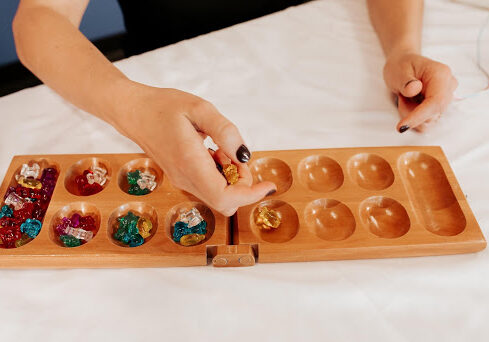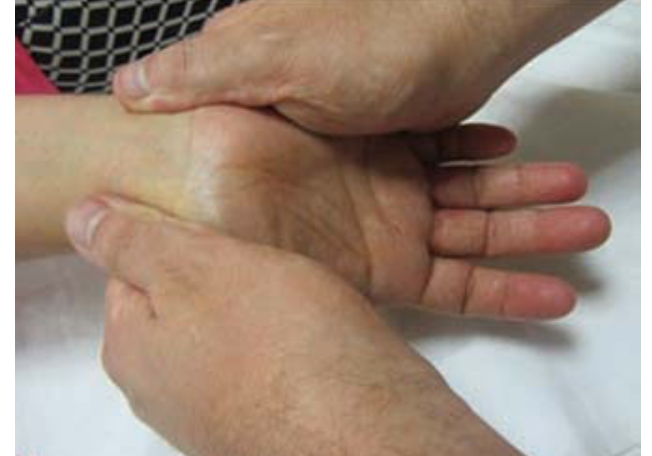By: Chelsea Gonzalez
What do you do when a pediatric patient walks into your clinic? Aren’t kids just little adults? They’ll just grow and be fine right?
It is no surprise that most hand therapy clinics cater to the adult population. The set-up, equipment, and process of a typical hand therapy clinic assumes a client can independently navigate and complete therapist-directed exercises a majority of the time. So, when a pediatric client walks in the door, the culture of the clinic must change to match the interests and abilities of the child/teen.
Pediatrics in hand therapy is also very important. Children are not just small adults. Their musculoskeletal set-up is still growing and developing, and their interests tend to be more extrinsically motivated than adults, which means they require incentives, rewards, or fun to capture their attention and persuade them to participate. Kids learn best when having fun, so incorporating sticker/token charts for task completion or allowing kids the chance to earn rewards during therapy sessions (similar to a restaurant punch card) are tried and true methods of motivating kids to work towards goals.
No matter the condition, almost all pediatric hand injuries will be attending therapy for stretch, massage and strengthening. Making kiddos feel like they are a part of the therapy process, particularly for stretch & massage, helps keep the child’s attention while allowing you the time to reduce scar adherence, prevent contractures, or break up soft tissue injuries.
- My ideas for making stretch & massage fun & interactive include:
- playing with large beads (bonus: tactile input!)
- playing Simon Says or Follow the Leader for stretches
- drawing dots (with washable marker) on their arm/hand/shoulder where will be stretched
- letting the kiddo control an interactive timer so they feel involved
- squeezing/pinching playdough, putty or Floam (bonus: power grasp strengthening!)
- Strengthening exercises should also be made into games and incorporate fun! Some of my favorite fine & gross motor strengthening activities that are easy to complete in a hand clinic are:
- pouring from large containers using both hands to build upper body strength
- scooter boards for shoulder & scapula stability training
- hexagon peg puzzle boards for intrinsic hand strengthening
- tunnels for shoulder and elbow weight bearing
- for older kids, playing games or making competitions with kids of the same age/ability (holding, lifting, tossing, placing, etc.)
- bowling with medicine balls for bilateral upper extremity strengthening
- money origami for fine motor and intrinsic strengthening
A few other great resources for adding play to hand therapy:
- Pages 15-19 of Mary Benbow’s book Neurokinesthetic Approach to Hand Function & Handwriting, available for preview through Clinician’s View, offers a plethora of game & activity ideas organized by upper extremity region: https://www.clinicians-view.com/University/PDF/HF01/HF01TextPreview.pdf.
- Also see our previous blog post about the Top 5 Hand Therapy Toys for Kids: https://www.handtherapyacademy.com/treatments/top-5-hand-therapy-toys-to-for-kids/ for inspiration on simple additions that make big changes in welcoming kids into a hand therapy setting.
Big Concept: Little hands are important too! If you support kids as they grow & heal, and you make it fun to do so, you increase the chance of strong upper body function throughout the kiddos’ lifetime.
Resources
Punch card reward: https://www.amazon.com/Cards-Incentive-Classroom-Incentive-Reinforcement-Customers/dp/B07LFH5Y3Z/ref=asc_df_B07LFH5Y3Z/?tag=hyprod-20&linkCode=df0&hvadid=312099652290&hvpos=1o9&hvnetw=g&hvrand=10511650479208070305&hvpone=&hvptwo=&hvqmt=&hvdev=c&hvdvcmdl=&hvlocint=&hvlocphy=9029981&hvtargid=pla-623287524379&psc=1
Liquid motion bubbler timer: https://www.amazon.com/Pack-Liquid-Motion-Bubbler-Timer/dp/B07D717SCW
More To Read
How to Improve Fine Motor Translation Skills
By: Josh MacDonald The Basics – I lay a pile of small objects on the table and an open container for the client to put them into. What object I use depends on the client’s level. We’ll get to that later. Then, they use a 2-point pincer grasp to pick up one and shift it…
Read MoreThe Effectiveness of Manual Therapy Versus Surgery in Carpal Tunnel Syndrome
Fernández-de-las-Peñas, C., Cleland, J., Palacios-Ceña, M., Fuensalida-Novo, S., Pareja, J. A., & Alonso-Blanco, C. (2017). The effectiveness of manual therapy for carpal tunnel versus surgery on self-reported function, cervical range of motion, and pinch grip force in carpal tunnel syndrome: A randomized clinical trial. Journal of Orthopedic & Sports Physical Therapy, 47(3), 151–161. https://doi.org/10.2519/jospt.2017.7090 The…
Read MoreWound Healing in Hand Therapy
By: Maddie Mott Wound healing (healing hand therapy) involves a complex series of interactions between different cell types, cytokine mediators, and the extracellular matrix with its four basic stages including hemostasis, inflammation, proliferation, and remodeling (Mackay & Miller, 2003). Because successful wound healing requires adequate blood and nutrients to be supplied to the site of…
Read MoreSign-up to Get Updates Straight to Your Inbox!
Sign up with us and we will send you regular blog posts on everything hand therapy, notices every time we upload new videos and tutorials, along with handout, protocols, and other useful information.





